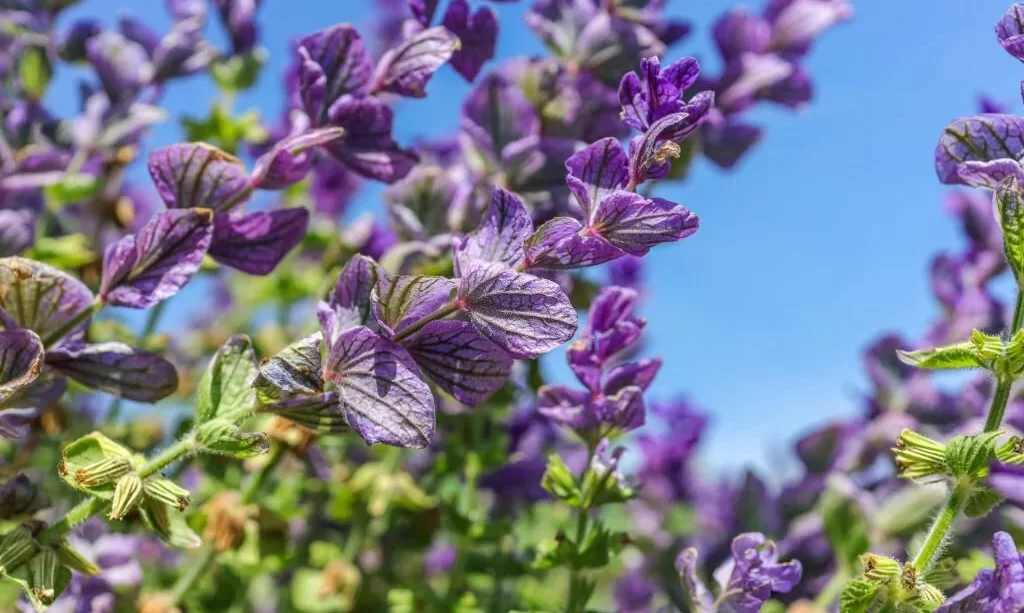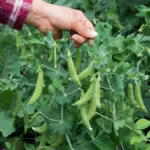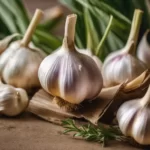Salvias, with their vibrant colors and diverse species, are prized additions to gardens and landscapes around the world. These perennial herbs not only contribute to the visual appeal of any garden but also provide nectar for pollinators like bees and hummingbirds. If you’re passionate about gardening or simply want to enhance your outdoor space, this article will serve as your comprehensive guide on propagating salvias, allowing you to create new plants from your existing ones.
In this journey, we will explore the art of propagation, a valuable skill that can save you money and expand your garden with beautiful salvias. Whether you’re a seasoned gardener or just starting out, the world of salvias holds something for everyone, and by propagating them, you can experience the joy of nurturing these stunning plants from the very beginning.
Salvias
To successfully propagate salvias, it’s crucial to understand the genus Salvia and the rich diversity it encompasses. Salvias belong to the mint family (Lamiaceae) and consist of numerous species and varieties, each with its unique characteristics. These versatile plants can range from low-growing ground covers to tall, bushy perennials. Salvias are renowned for their prolific flowering, which occurs in various shades, including vibrant reds, purples, blues, and whites.
Salvias are well-adapted to different climates and growing conditions, making them suitable for a wide range of gardens and landscapes. Understanding the specific traits of different salvia varieties, such as growth habits, foliage, and flower colors, will guide you in selecting the ideal salvias for your garden and propagation projects.
Propagation Methods
There are several methods to propagate salvias, each with its own advantages and considerations:
- Seeds: Propagating salvias from seeds is a cost-effective way to grow new plants. Salvias produce seeds after flowering, and collecting and sowing these seeds can yield a variety of new plants. This method is ideal for creating diverse plant populations with the potential for unique traits.
- Cuttings: Taking cuttings from established salvias is an efficient way to produce genetically identical plants. This method is particularly useful when you want to replicate a specific salvia variety. By carefully selecting and rooting cuttings, you can ensure the new plants inherit the exact traits of the parent plant.
- Division: Some salvias, particularly clumping varieties, can be propagated through division. This method involves separating mature plants into smaller sections, each of which can develop into a new, healthy plant. Division is an excellent way to rejuvenate older salvias and promote their vigor.
Each propagation method has its own set of requirements and benefits, making it essential to choose the one that suits your goals and preferences. Whether you’re drawn to the diversity of seeds, the precision of cuttings, or the renewal potential of division, propagating salvias opens up a world of possibilities in your garden.
Propagating Salvias from Seeds
Propagating salvias from seeds is a rewarding and budget-friendly way to grow a variety of these stunning plants. Here’s how to propagate salvias from seeds:
- Collecting Seeds: Salvias produce seeds after flowering. Wait until the seed pods have dried on the plant. Harvest the seeds by gently shaking the pods into a container.
- Storing Seeds: Store the salvias seeds in a cool, dry place until you’re ready to sow them. Proper storage helps maintain their viability.
- Sowing Seeds: Plant salvias seeds in trays or pots filled with well-draining soil. Lightly press the seeds into the soil’s surface, and cover them with a thin layer of soil or vermiculite.
- Germination: Keep the soil consistently moist and place the tray or pot in a warm, well-lit location. Salvia seeds typically germinate in 1-3 weeks, but it can vary depending on the species.
- Transplanting: Once the seedlings have developed several true leaves, transplant them into individual pots or directly into the garden, ensuring proper spacing.
Propagating salvias from seeds allows you to explore the wide range of salvias available, each with its unique characteristics.
Propagating Salvias from Cuttings
Propagating salvias from cuttings is a method that allows you to produce plants identical to the parent plant. Here’s how to propagate salvias from cuttings:
- Taking Cuttings: Select a healthy, non-flowering stem from the parent salvia plant. Make a clean cut just below a leaf node using sharp, sterile pruning shears.
- Preparing Cuttings: Remove the lower leaves from the cutting, leaving only a few leaves at the tip. This reduces water loss and encourages root development.
- Rooting Medium: Plant the cuttings in a well-draining rooting medium. You can use a mixture of perlite and peat or a rooting hormone to encourage root growth.
- Maintaining Humidity: Place the pot or tray of cuttings inside a plastic bag or under a clear plastic cover to create a humid environment. This encourages successful rooting.
- Root Development: Keep the cuttings in a warm, well-lit area. It may take a few weeks for roots to develop. You can gently tug on the cutting to check for resistance, indicating that roots have formed.
- Transplanting: Once the cuttings have well-established roots, transplant them into individual pots or directly into the garden.
Propagating salvias from cuttings is a reliable way to ensure that your new plants inherit the exact traits of the parent plant.
Propagating Salvias through Division
Propagating salvias through division is a method primarily suitable for clumping or spreading varieties. Here’s how to propagate salvias through division:
- Choosing the Right Time: The best time to divide salvias is in early spring or fall when the plant is not actively flowering. Choose a cool, overcast day to minimize stress on the plant.
- Digging Up the Plant: Carefully dig up the entire clump of the salvia plant, ensuring you dig a wide enough area to preserve the roots.
- Dividing the Clump: Gently separate the clump into smaller sections. Each section should have a portion of the root system and several healthy stems and leaves.
- Replanting: Transplant the divided sections into prepared holes in the garden or into pots filled with well-draining soil. Water them thoroughly to help with the establishment.
Propagating salvias through division not only produces new plants but also rejuvenates the parent plant, promoting its health and vigor.
Caring for Propagated Salvias
Caring for propagated salvias, whether from seeds, cuttings, or division, is essential to ensure their successful growth and flourishing in your garden. Here are some key aspects to consider:
- Watering: Maintain consistent soil moisture, keeping it evenly moist but not waterlogged. Young salvias are particularly sensitive to overwatering, so it’s essential to strike a balance.
- Fertilization: Fertilize your propagated salvias with a balanced, slow-release fertilizer. Avoid over-fertilization, which can lead to excessive vegetative growth at the expense of flowering.
- Sunlight: Salvias thrive in full sun or partial shade, depending on the species. Ensure they receive the appropriate amount of sunlight based on their specific requirements.
- Protection from Pests and Diseases: Monitor your salvias for signs of pests or diseases. Early detection and intervention are crucial for keeping your plants healthy.
- Pruning: Regularly deadhead faded flowers to encourage continuous blooming. Pruning can also help maintain a compact and tidy growth habit.
- Support: Some taller salvias may benefit from staking or support to prevent them from falling over, especially in windy conditions.
- Winter Protection: In regions with cold winters, consider providing protection, such as mulch or frost cloth, to safeguard your salvias during the colder months.
Troubleshooting Common Issues
While propagating salvias can be a rewarding experience, it’s essential to be aware of and address common issues that may arise:
- Poor Germination: In the case of propagating from seeds, poor germination can occur due to factors like incorrect soil temperature, insufficient moisture, or expired seeds. To address this, provide the optimal conditions for germination and use fresh, high-quality seeds.
- Root Rot: Overly wet soil can lead to root rot, particularly in cuttings and young plants. Ensure well-draining soil and careful watering to prevent this issue.
- Transplant Shock: When transplanting propagated salvias, they may experience some shock. Gradually introduce them to their new location by hardening them off before planting, and water them adequately after transplanting.
- Pest Infestations: Aphids, mealybugs, and other pests can affect salvias. Monitor your plants regularly, and use organic or chemical controls as needed.
- Disease: Some salvias are susceptible to fungal diseases. Proper spacing and good air circulation can help prevent these issues.
Conclusion
Successfully propagating salvias is a fulfilling and cost-effective way to enrich your garden with these delightful plants. Whether you’ve chosen to grow new salvias from seeds, cuttings, or division, your efforts are sure to be rewarded with an abundance of beautiful, vibrant blooms.
Through careful nurturing, from selecting the right propagation method to providing the appropriate care, you can watch your salvias thrive and become a centerpiece of your garden. The joy of propagating salvias lies not only in creating new plants but also in deepening your connection with the natural world and fostering a deeper appreciation for the beauty of these remarkable herbs.
As you continue your journey with salvias, remember that gardening is an ongoing adventure. Each new propagation project brings a unique sense of accomplishment, and the thriving salvias you cultivate will be a testament to your dedication and passion for these extraordinary plants.



